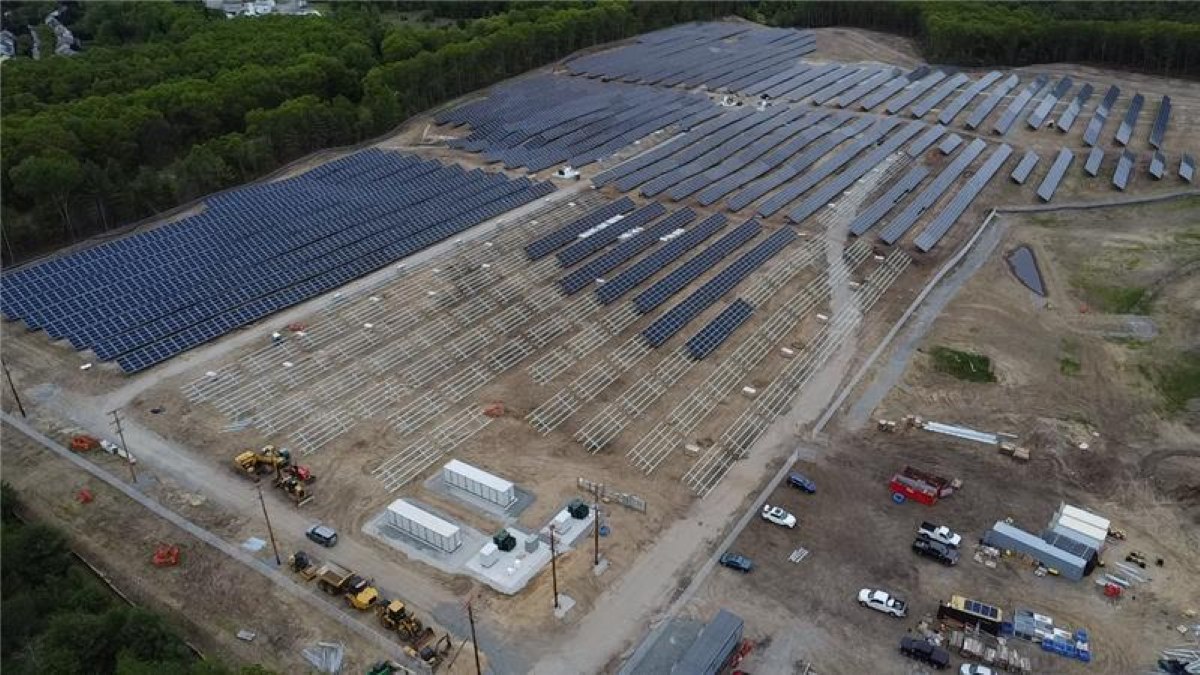REC Solar Completes Two Solar Projects for California Agriculture Producers
REC Solar, a leader in solar system design and installation, today announced the completion of solar energy systems for two California farms totaling 1 MW of electricity. Peter Rabbit Farms in Coachella and Amaral Ranches in the Imperial Valley have joined the ranks of growers, cold storage and food processing facilities that are “harvesting the sun” to hedge against rising electricity costs and save money.
 With the completion of these systems, Peter Rabbit Farms and Amaral Ranches align with more than 300 California farmers and ranchers now utilizing solar energy to reduce utility bills. Agriculture represents nearly 30 percent of California’s commercial solar capacity, according to PV Solar Report, and experts anticipate the sector will continue to gain strength. Solar energy is an attractive choice for California farmers for a number of reasons, among them that California farmers face the third-highest electricity costs in the nation. With rates expected to rise 5 to 7 percent over the next decade, farmers can hedge against electricity cost increases by locking in lower rates via solar energy. Furthermore, most growers plan to remain on their land for the long term, making it particularly compelling to invest in a solar system with a longer payback to start saving on electricity costs immediately.
With the completion of these systems, Peter Rabbit Farms and Amaral Ranches align with more than 300 California farmers and ranchers now utilizing solar energy to reduce utility bills. Agriculture represents nearly 30 percent of California’s commercial solar capacity, according to PV Solar Report, and experts anticipate the sector will continue to gain strength. Solar energy is an attractive choice for California farmers for a number of reasons, among them that California farmers face the third-highest electricity costs in the nation. With rates expected to rise 5 to 7 percent over the next decade, farmers can hedge against electricity cost increases by locking in lower rates via solar energy. Furthermore, most growers plan to remain on their land for the long term, making it particularly compelling to invest in a solar system with a longer payback to start saving on electricity costs immediately.
Peter Rabbit Farms, a fourth-generation family-run farm that grows carrots, lettuce, table grapes and other vegetables, worked with REC Solar to install a 358-kW solar system that provides enough power to offset 40 percent of their energy use and save an estimated $80,000 off their yearly utility bills. The system is already providing power at 100 percent of its projected production rate.
“Peter Rabbit Farms is pleased to benefit from our recent solar installation in many ways,” said John Powell, president and CEO of Peter Rabbit Farms. “In addition to reducing our usage of non-renewable power, we are benefitting financially from a reduced overall cost of power. The solar system adds one more way that our company is making a statement on the sustainability of our operations. REC Solar delivered on their promises during the construction phase, and the system’s production is right on target with REC Solar’s budgeted projections.”
REC Solar also worked with Amaral Ranches – a family-owned farm that grows cabbage, corn and watermelon – to install a 605-kW system that provides enough power to offset over 70 percent of Amaral Ranches’ growing and cold storage operations. The project was financed by Rabobank, N.A., a community bank that provides solar financing to California farms, businesses and public organizations. With the solar array, Amaral Ranches takes advantage of their relatively dormant summer season to sell power back to the utility to offset costs during the more energy-intensive harvest and planting seasons. The system, which received the first solar permit for agricultural land in Imperial County, is already producing energy at 105% the rate of projected energy production.
Carlos Amaral of Amaral Ranches commented, “We had never considered solar in the past, but the savings were too big to ignore, especially due to the seasonal nature of our business. The system has delivered impressive savings so far while helping us reduce our environmental footprint.”
In addition to Peter Rabbit and Amaral Ranches, REC Solar has supported solar energy adoption for more than two-dozen large and small growers throughout the state, including two table grape growers in Delano. Castle Rock Vineyards and VBZ Grapes each worked with REC Solar to install 1.1-MW ground-mounted systems that were among the largest agricultural facility installations in the world upon completion.
“We’re working with increasing numbers of farmers and ranchers turning to solar energy to cut costs and maintain global competitiveness,” said REC Solar Director of Business Development Ryan Park. “Peter Rabbit Farms and Amaral Ranches have demonstrated foresight and environmental leadership by installing solar systems to cost-effectively reduce their energy use.”





Comments are closed here.